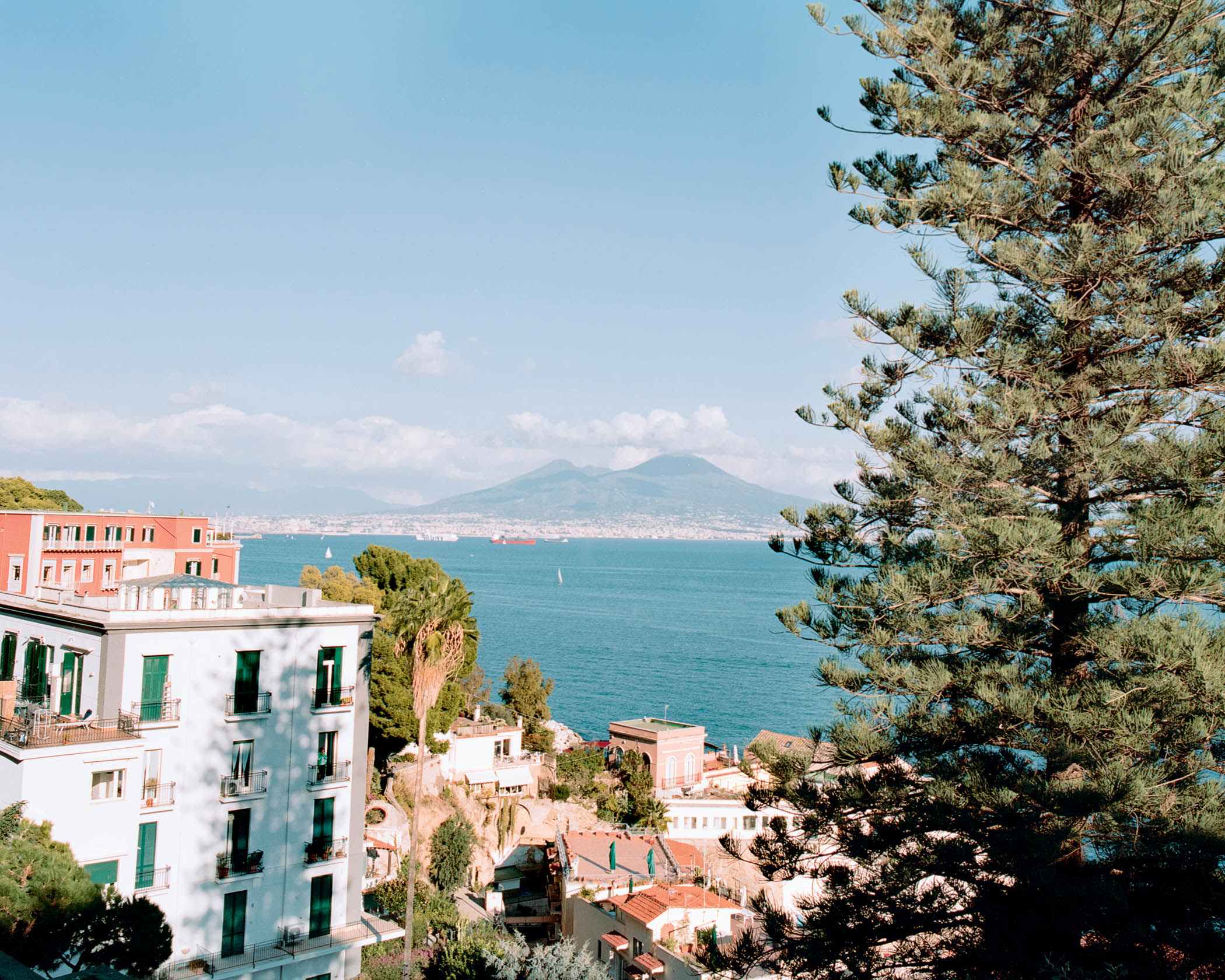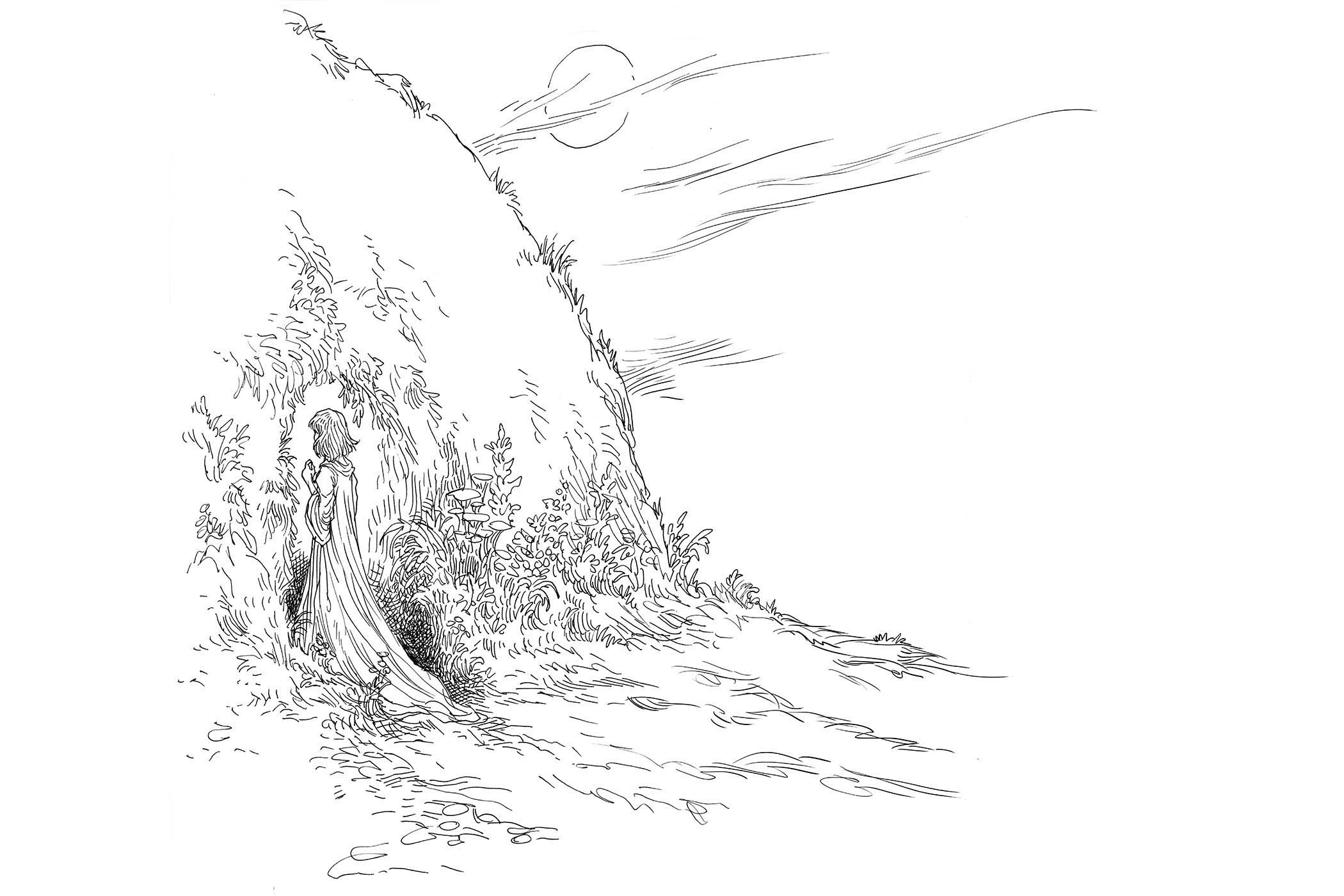Photographs Michele Iacobini
I have long yearned for an experience I read about in a poem. In Anne Sexton’s The Nude Swim she describes swimming in an “unknown grotto” in Capri, where she and her companion let their “bodies lose all / their loneliness”.
I’ve always thought of loneliness as something latent in me, a kind of rising damp that seeps to the surface no matter what I do. This past year, I’ve tried to change that, but my attempts to forge new kinds of relationships have left me tender. Since my doom-mongering is tempered by a puppyish hopefulness, Sexton’s poem makes it feel possible that loneliness could be lost, like virginity. So with all the hope of a faithful visiting Lourdes, I decided to seek out Sexton’s grotto for an inexplicable intervention.
As I contemplated my journey I thought of how often I’ve been moved to make literary pilgrimages, from Sylvia Plath’s despondent grave in Heptonstall to Dante Alighieri’s house in Florence. A journey inspired by literature gives travel a different shape, liberates it from the template of “must sees”. A quest for inspiration, and alteration, is a mode of company in itself. In the lead-up to this trip, The Nude Swim became my collaborator. I anticipated the relief of floating in Capri’s sea, where Sexton had rested “as on a divan”. She made a metaphorical bed for me and I was desperate to lie in it.
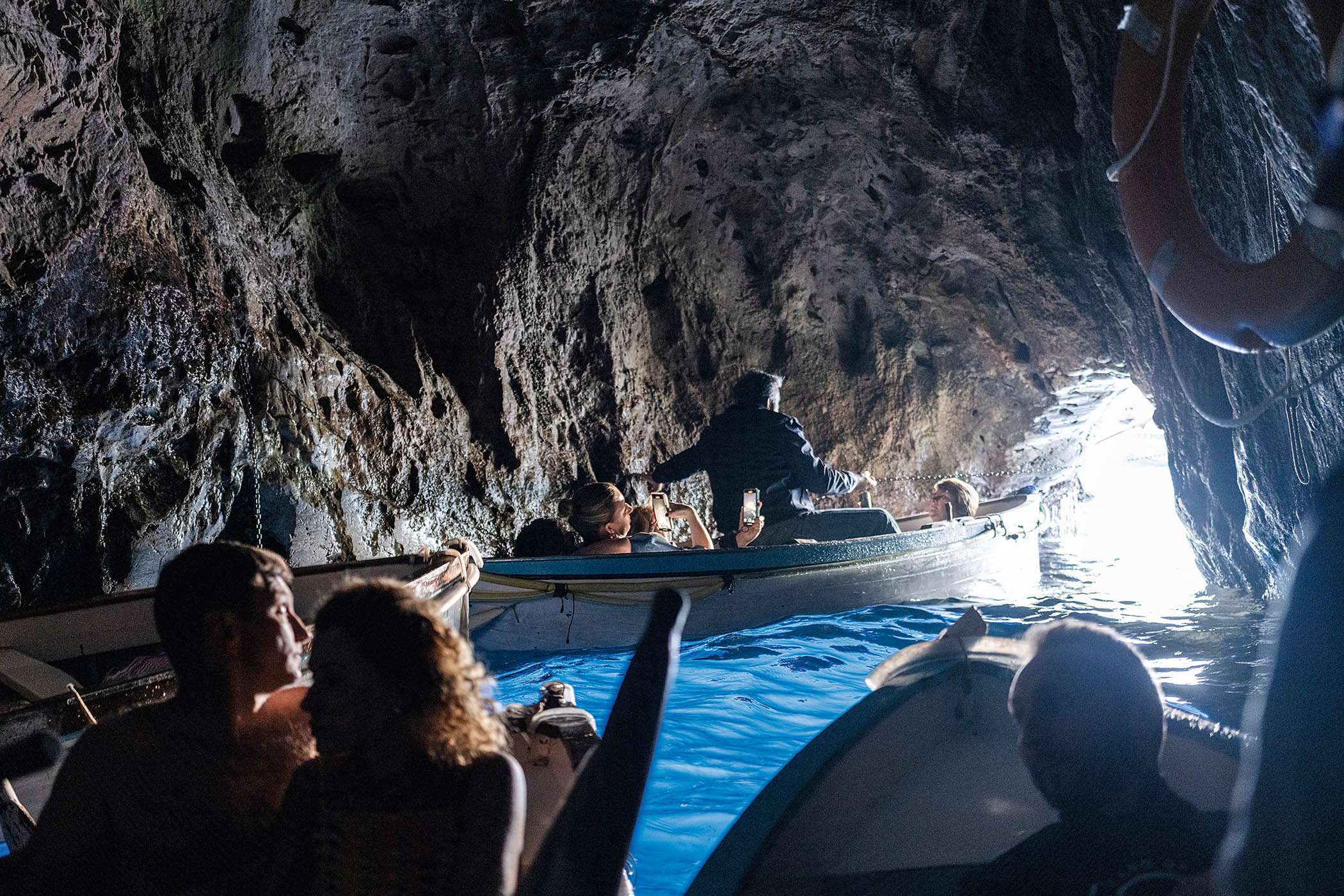
Capri is reached by boat from a nearby port, like Naples or Sorrento. I flew into Naples, having wanted to visit ever since reading Elena Ferrante’s novels, which are set in the city. I figured if I didn’t find a grotto that could cure loneliness, Ferrante’s Naples would console. To settle myself in, I planned an overnight stop on Ischia, followed by three nights in Capri and then back to Naples for the final two. The 50-minute ferry crossing from Naples to Ischia was busy, so instead of a view I watched a (possibly) live stream of the journey on a screen, the ferry cutting a frilly white chevron into the sea. We arrived at Ischia’s Casamicciola port, with its cluster of almond and ochre-painted shops and bars backed by steep hills. I gave myself a day of drift – swimming in the sheltered San Montano bay and then dinner at my hotel (Hotel la Maggioressa) where the manager, Franz, cooks three courses for €28.
Related articles:
The following morning I took another ferry from Ischia’s port to Capri’s Marina Grande. I sat up top at the back, looking behind me as we zoomed out of Ischia and soon passed Procida’s harbour, with its sweetie-coloured buildings, dinky in the distance. I kept my eyes fixed on the scenery – craggy rocks and greenery – while a succession of glamorous women came to sit next to me to have their photo taken by their compliant male partners.

In Capri I rented a one-bedroom apartment (The Cherubini) overlooking the marina, a few minutes’ walk uphill from the ferry terminal. I chose it for its views: the living room opened on to a terrace, with the Bay of Naples, Vesuvius and Sorrento in the distance. Below was a small beach I could reach via steps close to the apartment, then the harbour just beyond it. After a quick swim, I headed back to the marina where I bought myself a Capri lemon sorbet, which is served in an enormous hollowed-out lemon, and then took a four-minute funicular ride from the marina up to Capri town. Here I lost my bearings, bewildered by boutiques where I was expecting souvenir shops.
Priced out of a purchase, I walked to the small central square, Piazza Umberto I, for a glass of wine outside Il Piccolo, in one of the last slices of sun.
Visiting a poem is like attempting to eat an idea. I searched online for “Capri grotto” and was directed to the Blue Grotto. This must be the place, I thought, because Sexton wrote “the walls of that grotto / were everycolor blue”, but a fact check of the geography made me doubtful (northwest not southwest). In an essay for the Poetry Review, poet Jack Underwood wrote, “With poems you have to risk all kinds of small, hopeful, doomed leaps.” Sexton’s poem had inspired me to make a hopeful, doomed leap, and that meant accepting I might visit the wrong grotto entirely.
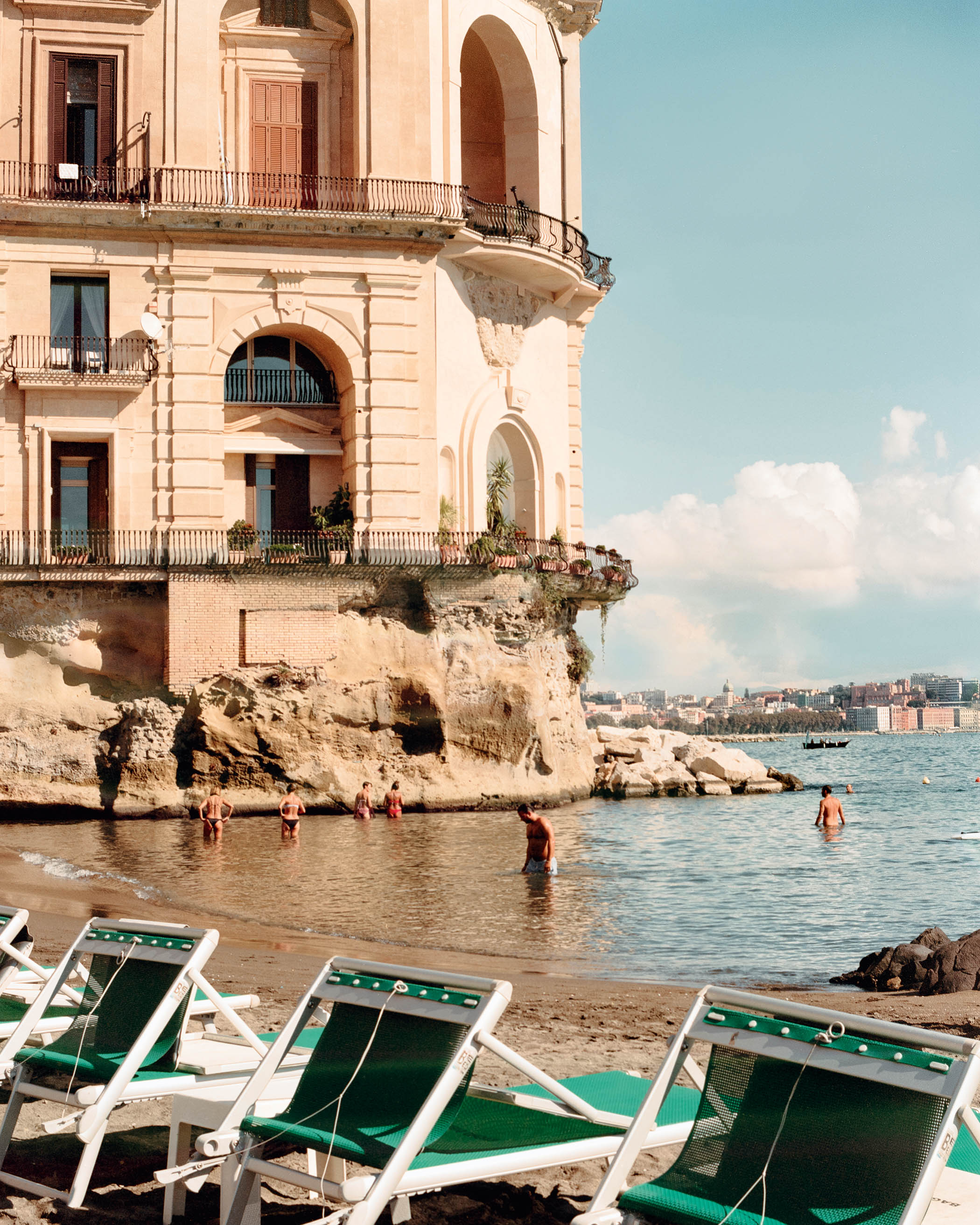
The next morning, I took a 15-minute bus from the marina up to Anacapri, close to Mount Solaro, and from there another 20-minute bus down twisty roads to the Blue Grotto. There was a large queue on the steps leading down to the sea and out on the water many boats bobbed in a chaotic flotilla. As I waited, I recited Sexton’s poem in my head, laughing at the line about it being a place “where no people were”.
Experience cannot be summoned. But that doesn’t mean we shouldn’t try
When my turn came, a boatman called me and an older couple on to his boat. He rowed us to a floating booth to pay an €18 admission fee, and told us to lie down so he could manoeuvre into the mouth of the grotto, which is about the size of a collapsed one-man tent. We slipped in with a whoosh. It felt shocking to be abruptly in the dark. Slowly my eyes adjusted to the supernatural blue of the water, and I was able to see the cave, roughly 50m across, walls lit-up palely. There were several other row boats full of tourists with their phones flashing. The boatmen sang and the sounds of their voices merged, echoing in a confused round. As our boat circled I felt stunned. Nothing about the colour of the water in the grotto made sense to me. I was torn between having an experience and capturing an experience, and all my thoughts sloshed up against each other: what a strange place! I wish I was alone! I wish I was nude! I wish these boatmen would shut up! It was over in just a few minutes.
During my research I’d also learned of Capri’s less famous caves. The following afternoon I took a boat tour (HP Travel, from €52 per person) to visit them. There were only three of us, me and some honeymooners. The skipper, Vincenzo, blasted Barry White as he sailed us southeast. Our first stop was the White Grotto, where we took the swim promised on the itinerary. Then on to the Coral Grotto where we saw roe-coloured coral lining the cave.
Our final stop, past the huge Faraglioni rocks, was the Green Grotto, where Vincenzo asked if I wanted to swim again. Can I? I said, barely believing it. He told me to swim from one side to the other, where the boat would meet me. I jumped in and swam towards the cave, which extends for 5m before opening up again around the corner. The water was the most extraordinary turquoise. The surprise of it flooded my emotions. I was suddenly not emotionally at sea, but swimming in Sexton’s poem, where “all the fish in us / had escaped for a moment”. By the time the boat met me I was in tears. I took a photo of my face straight after I got out of the water. I wanted to be able to see what joy looks like when I’m feeling it.
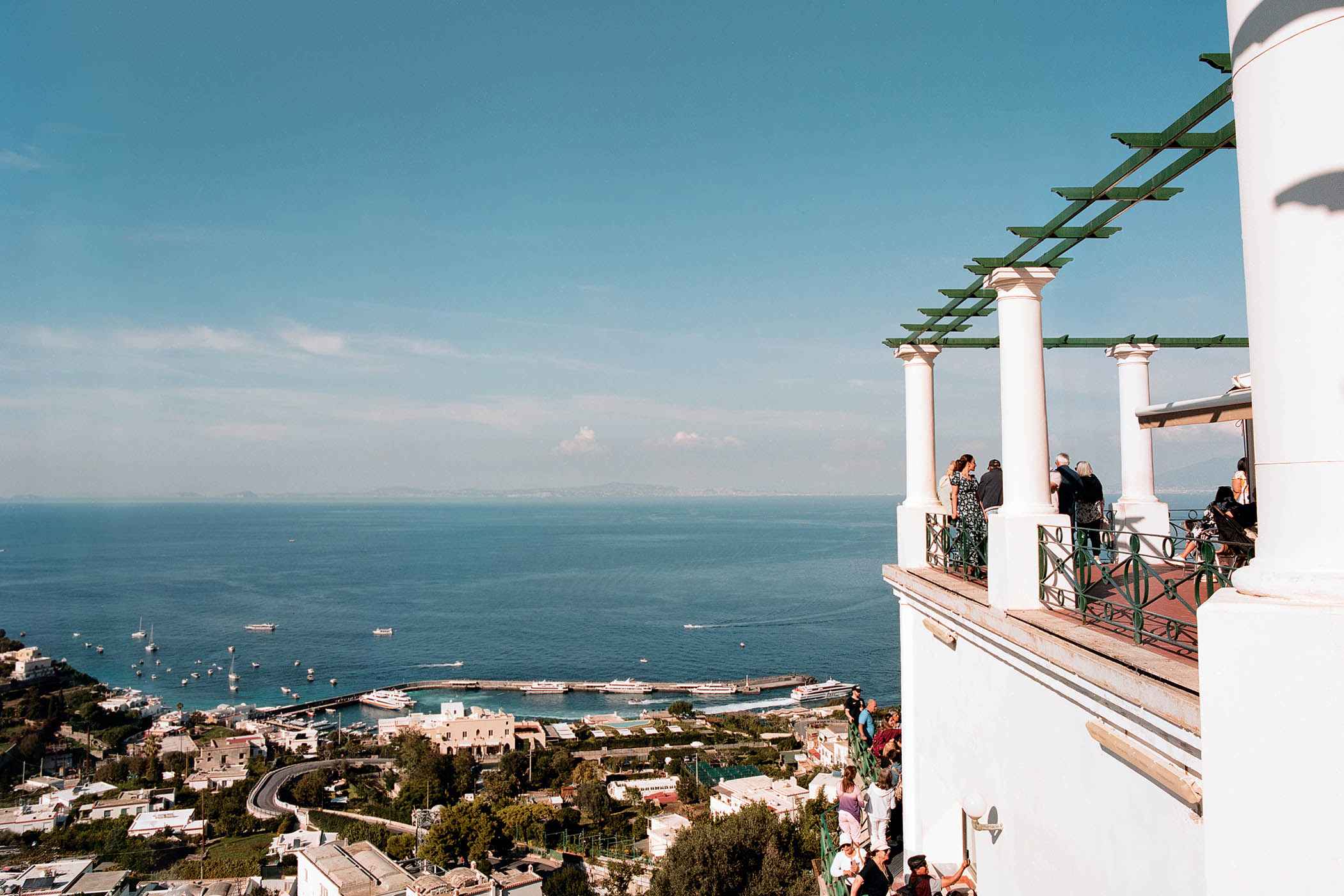
On the ferry to Naples the next day, I saw rainbow after rainbow in the waves the ferry made. I’d booked two nights in an apartment overlooking a miniature beach behind the Palazzo Donn’Anna, constructed in the 1640s, but never completed. On one side it is open like a grand, derelict doll’s house. My plans for Naples were vague – I wanted to visit Rione Luzzatti, the neighbourhood that inspired Ferrante’s work, but I got sick and had to rest. Sitting on my balcony, the render of the Palazzo golden in the morning light, I realised I’d seen the building before, in the TV adaption of My Brilliant Friend. I encountered Ferrante after all.
On the flight home, I wondered whether it was embarrassing to go in search of an abstraction. Experience cannot be summoned, it’s too capricious. But that doesn’t mean we shouldn’t try. In the space between the poetic ideal and the tourist-trap reality I’d nurtured something else, an acceptance.
The Blue Grotto was a spectacle I’ll always remember, but it didn’t alter me; the Green Grotto didn’t cure my loneliness either, but it made me feel like I had been taken into its confidence. A secret shared between me and the Green Grotto, and that alone was warm and stimulating company.
